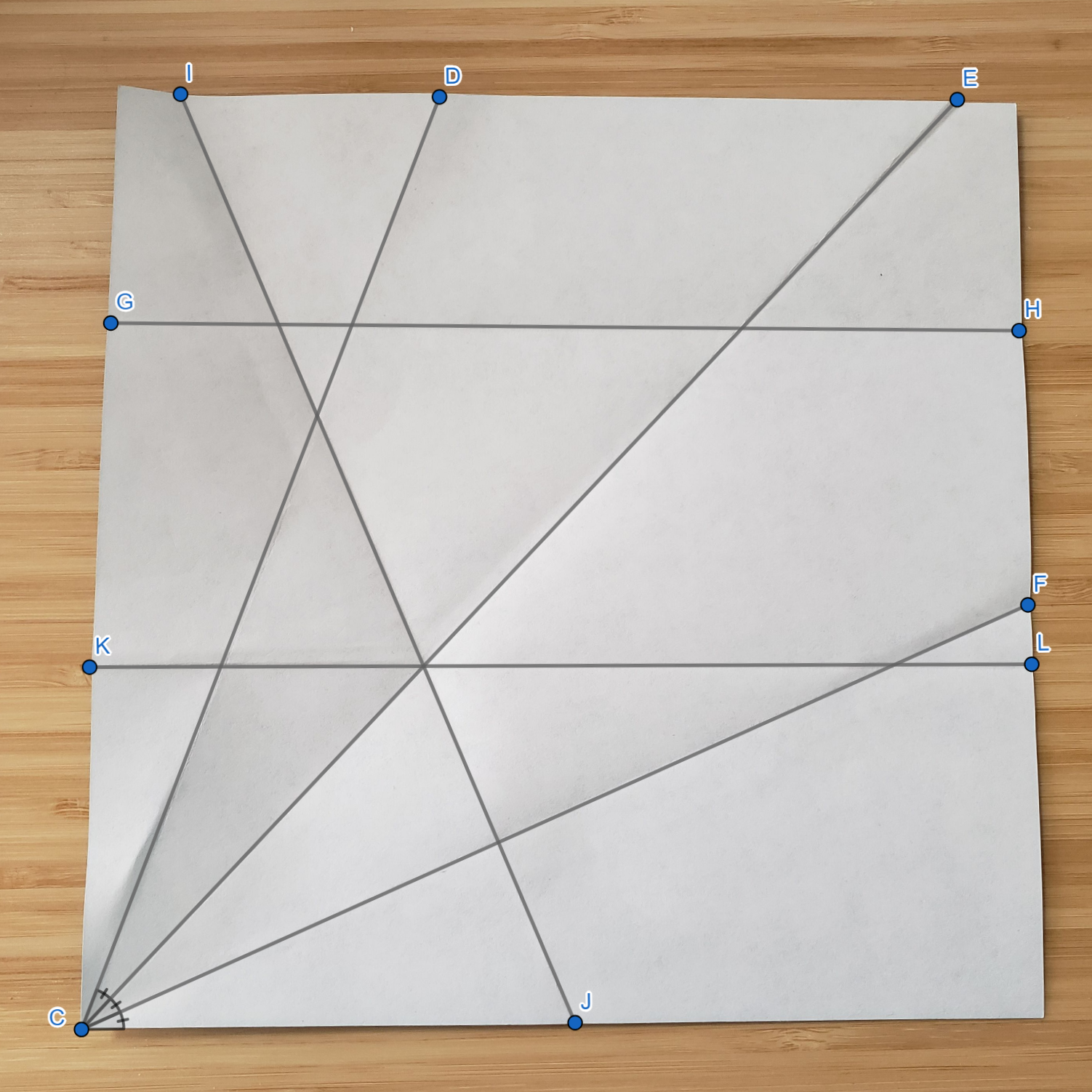Lesson 5
Construction Techniques 3: Perpendicular Lines and Angle Bisectors
- Let’s use tools to solve some construction challenges.
5.1: Two Circles
Points \(A\) and \(B\) are each at the centers of circles of radius \(AB\).

- Compare the distance \(EA\) to the distance \(EB\). Be prepared to explain your reasoning.
- Compare the distance \(FA\) to the distance \(FB\). Be prepared to explain your reasoning.
- Draw line \(EF\) and write a conjecture about its relationship with segment \(AB\).
5.2: Make It Right
Here is a line \(\ell\) with a point labeled \(C\):
Use straightedge and compass tools to construct a line perpendicular to \(\ell\) that goes through \(C\).
5.3: Bisect This
Here is an angle:
- Estimate the location of a point \(D\) so that angle \(ABD\) is approximately congruent to angle \(CBD\).
- Use compass and straightedge tools to create a ray that divides angle \(CBA\) into 2 congruent angles. How close is the ray to going through your point \(D\)?
- Take turns with your partner, drawing and bisecting other angles.
-
For each angle that you draw, explain to your partner how each straightedge and compass move helps you to bisect it.
-
For each angle that your partner draws, listen carefully to their explanation. If you disagree, discuss your thinking and work to reach an agreement.
-
For thousands of years since the ancient Greeks started playing with straightedge and compass constructions, people strived to find a construction to trisect an arbitrary angle into three equal angles. Many claimed to have found such a construction, but there was always some flaw in their reasoning. Finally, in 1837, Pierre Wantzel used a new field of mathematics to prove it was impossible—which still did not stop some from claiming to have found a construction. If we allow other tools besides just a straightedge and compass, though, it is possible. For example, try this method of using origami (paper folding) to trisect an angle.

Summary
We can construct a line that is perpendicular to a given line. We can also bisect a given angle using only a straightedge and compass. The line that bisects an angle is called the angle bisector. Both constructions use 2 circles that go through each other’s centers:

For the perpendicular line, start by finding 2 points on the line the same distance from the given point. Then create the 2 circles that go through each other’s centers. Connect the intersection points of those circles to draw a perpendicular line.

For the angle bisector, start by finding 2 points on the rays the same distance from the vertex. Then create the 2 circles that go through each other’s centers. Connect the intersection points of those circles to draw the angle bisector.

In fact, we can think of creating a perpendicular line as bisecting a 180 degree angle!
Glossary Entries
- angle bisector
A line through the vertex of an angle that divides it into two equal angles.
- circle
A circle of radius \(r\) with center \(O\) is the set of all points that are a distance \(r\) units from \(O\).
To draw a circle of radius 3 and center \(O\), use a compass to draw all the points at a distance 3 from \(O\).
- conjecture
A reasonable guess that you are trying to either prove or disprove.
- inscribed
We say a polygon is inscribed in a circle if it fits inside the circle and every vertex of the polygon is on the circle. We say a circle is inscribed in a polygon if it fits inside the polygon and every side of the polygon is tangent to the circle.
- line segment
A set of points on a line with two endpoints.
- parallel
Two lines that don't intersect are called parallel. We can also call segments parallel if they extend into parallel lines.
- perpendicular bisector
The perpendicular bisector of a segment is a line through the midpoint of the segment that is perpendicular to it.





